There are a few things that make a coffee lover’s heart beat faster. Like visiting the coffee shop of your dreams, joining your coffee idol for a cupping or getting your Barista certificate. Over the last few years I have been fortunate enough to tick off quite a few items on my bucket list but there was one ultimate experience that was still missing. During my last visit to the US and Mexico I had set myself a goal and I was going to achieve that goal at all costs. Well, maybe not at all costs but I was prepared to go out of my way to finally set foot on a coffee farm.
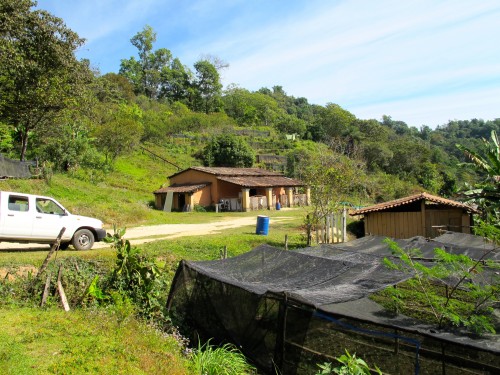
Coffee farms are like the promised land of great coffee but because they are often located in remote and mountainous regions of Central / South America, Africa or Asia, we can’t just hop on a plane and do a tour around some excellent coffee farms like you might be able to do with wine in France. What’s more, unlike wine, really good coffee is almost exclusively exported in its raw green form, making it almost impossible to get a taste for it on site. So, finding a coffee farm that doesn’t just offer access to its facilities but one that also has a coffee roastery close by is almost like finding the pot of gold at the end of the rainbow.
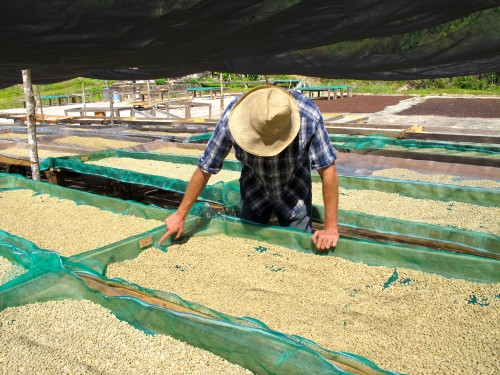
“[..] a few years ago, the Finca was rebuilt and has been producing high quality organic coffees ever since.”
I guess it was a stroke of luck then, that during my stay in Mexico’s beautiful surfer town Puerto Escondido I decided to pop into town and visit a small café and roastery in search of information on visiting one of the many coffee Fincas in the nearby Sierra Marde del Sur of Oaxaca state. When I asked the Barista on duty if they organized tours, she said to me: “Hold on a minute. I’ll get the manager.” Out of the roastery then came a very tall and blonde man who spoke perfect Spanish and introduced himself as Gustavo Boltjes, Headroaster and Farm Manager.
Don’t get me wrong here, I am half Mexican myself but Gus’ appearance was a real surprise. “Hi, I’m Alex and I run a company called The Coffeevine. I was wondering if I could maybe visit your Finca,” I offered after the inital shock wore off. Sure enough, after a short chat the deal was sealed. The next day I was to drive out to Finca Las Nieves and spend the day looking around the farm with Gus. I was so excited I could barely hide it!
To give you some background: Gus is half Dutch / half Swedish but was born and raised in Morelia in Mexico, which explains his appearance and flawless Spanish. Initially he came to the area of Puerto Escondido to work in eco-tourism but quickly discovered his passion for coffee and agriculture and found a way to combine the two. He’s been at Finca Las Nieves for more than eight years already.
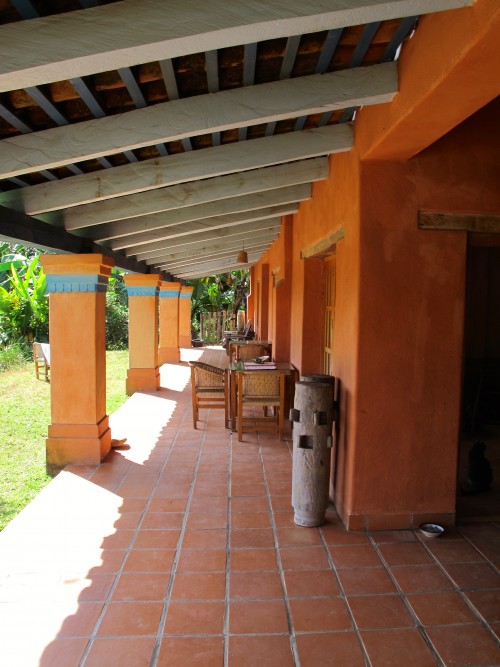
The next morning, after a short night’s sleep, I got up, had breakfast, got into our rental car and drove off towards Oaxaca City. The road from Puerto Escondido to the state capital is certainly a scenic one but nothing for people with motion sickness. As soon as you approach the mountains, you start snaking your way up and down an often narrow and hair-raising road. Gus had told me to meet him at a small café in a town called San Gabriel Mixtepec and despite getting lost a few times, I still managed to arrive on time for our early morning coffee date. Interestingly, the coffee at this local café was so sweet it almost took the enamel off my teeth but Gus just laughed it off. “Come on, get in your car and follow me. The road is pretty bad,” he informed me as he got in his pick up and I got in my shitty sedan.
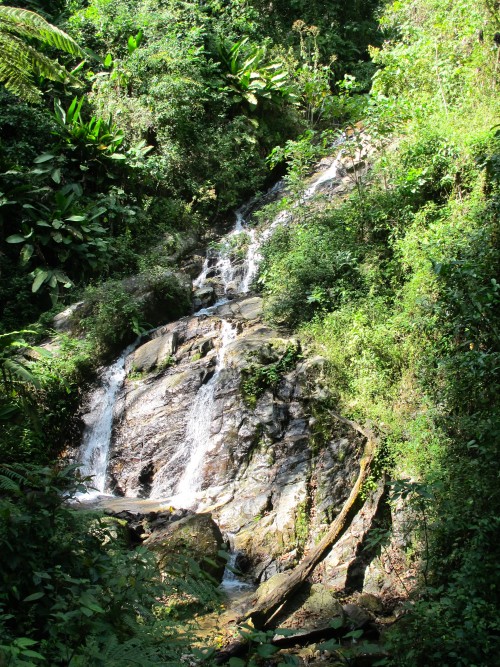
Sure enough, after roughly 20 minutes on the road we reached a bend and Gus took a sharp right turn up a rocky dirt path that we would have to follow for approximately 20 minutes and during which I repeatedly feared for our deposit on this rubbish Nissan Tiida, which clearly was not made for this kind of road. Yet, despite all the sharp drops, large rocks and small streams I had to pass and cross, we eventually arrived in a breath-taking clearing that formed the centerpiece of Finca Las Nieves. “Bienvenido mi buen Alex,” Gus proclaimed as we parked and headed to the Finca for a quick refreshment.
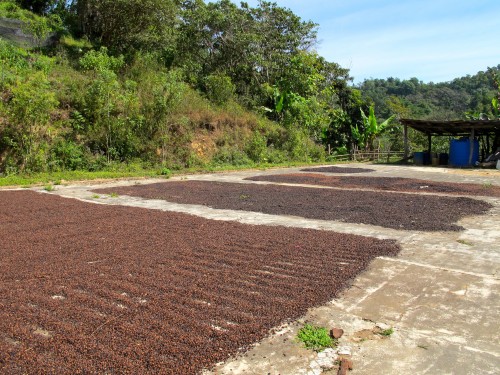
Finca Las Nieves has been a coffee producing farm since 1880 but after a few years of glory it fell into disrepair following a few failed crops and fluctuating coffee prices. Then, a few years ago, the Finca was rebuilt and has been producing high quality organic coffees ever since. What struck me the most was the incredible scientific knowledge that Gus and his team possess and apply to every single part of the production process, which has indeed resulted in some incredibly beautiful coffees.
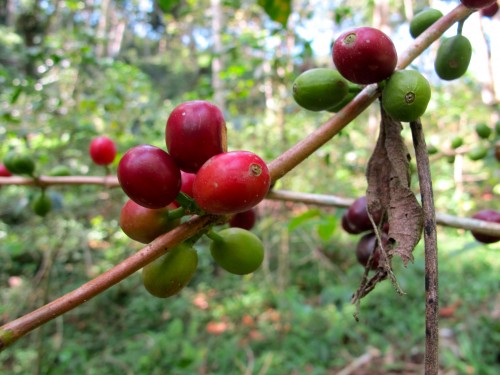
Gus and I first headed over to the washing station where I was shown some rather antique looking equipment that according to Gus “still works like it was brand new”. We then walked over to some fermentation barrels where Gus creates his own fertilizers using only organic and natural materials. I could go into very specific detail here thanks to my extensive notes – I almost got blisters on my iPad finger from typing so hard – but Gus asked me to keep this part a bit more general. But what I can say is that every single coffee harvest is treated differently. Science dictates the fermentation and drying periods in order to get the absolute most out of every single bean.
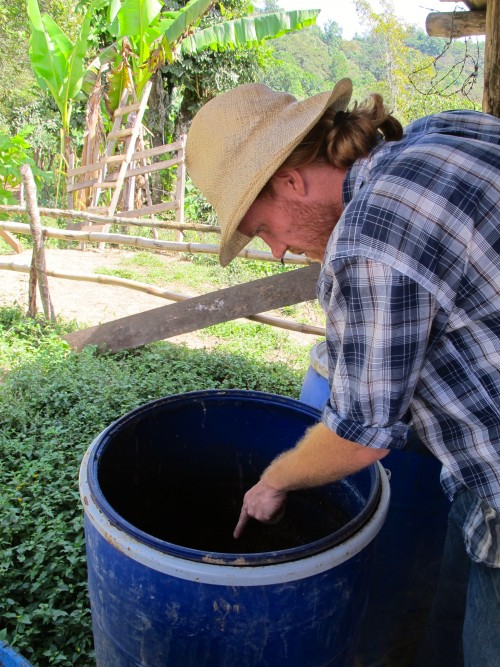
For instance, the coffees are not dried under direct sunlight but rather on raised beds and kept in the shade. This ensures that the coffees don’t dry too quickly, thereby becoming porous and often leading to mould. Furthermore, the beans are not laid on metal mesh but rest on mosquito nets instead as this prevents the pergamino from opening up in the process.
“According to Gus the best time to pick ripe cheeries is during full moon when energy levels rise and the cherries are sweeter and richer resulting in even better coffees.”
Gus and his team are also always on the look out for new architectual trends that can further improve the production process in the different lots. Since recently they have started applying key line design to a few of the lots to improve the irrigation and to ensure that water is more evenly distributed to avoid waste of water or potential oversaturation, which can lead to the death or the plants or even worse, landslides.
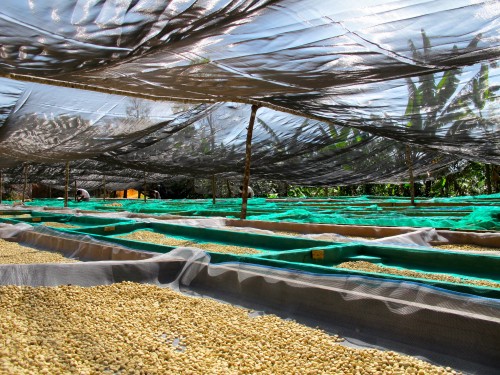
At this point my head was already spinning with an overload of information so Gus and I embarked on a hike around the premises, first heading towards a little waterfall that provides a lot of the water and energy that is used to run the Finca. The bio-diversity on the Finca’s terrain was quite frankly astonishing. Gus told me along the way that everything grows here because the land is extremely fertile and the climate favourable. We passed a huge range of different trees and bushes including lemon, bamboo, orange and many more. The different lots are connected by a network of paths that wind their way up and down the steep hills. At some point we reached the very border of the property in the Los Angeles Lot and Gus pointed out that many of the farm’s workers walk the steep paths to and from their homes every day.
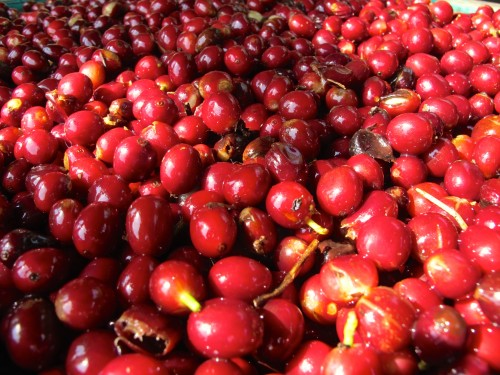
We started making our way back down towards the backside of the processing station, picking cherries off the coffee plants along the way and chewing their lush soft flesh to boost our energy before finally emerging back into the clearing by a small lot where they recently started cultivating the Geisha variety. Normally they focus on Caturra and Bourbon but Gus is keen to experiment with other coffees too.
The final treat during my visit was being able to observe Farm Administrator Fidel and one of his team members washing a big load of freshly picked cherries using the tempramental depulper. It was incredible to see how this works and to see the Finca’s creative use of energy production in action. Water from the nearby stream flows down a pipe towards a valve, which is opened when needed to power the depulper using giant leather straps attached to wheels. Gus told me earlier that this energy production was much more efficient that solar power, which cost a lot to set up but actually generated very little.
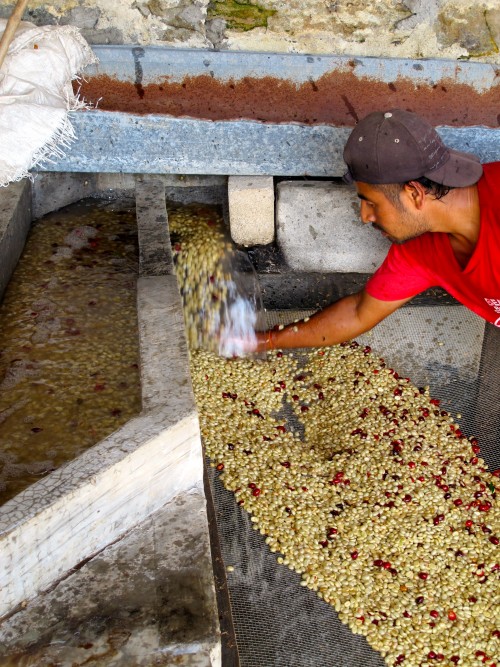
Despite all the scientific terms that Gus used along the way and that I first had to look up upon my return to my house I learned something else that I found really interesting. According to Gus the best time to pick ripe cheeries is during full moon when energy levels rise and the cherries are sweeter and richer resulting in even better coffees. Thus, he and his team try to work with the moon’s cycle to sync the production up with nature. Although hard to verify at that very moment, Gus’ extensive explanantion made a lot of sense.
When we returned to the Finca for a late lunch, I was exhaused and overwhelmed with so many incredible impressions, facts and stimulation that I first had to collect my thoughts while chewing on a few delicious vegetarian tamales. To top things off, Gus got out a bag of Finca Las Nieves’ Cup of Excellence 2014 finalist coffees and brewed a lovely pot of coffee for his girlfriend, himself and me. I could not have imagined a richer, more rewarding experience than what Gus and his team offered me on that beautiful sunny day in December. I wish everyone could have the opportunity to pop his or her coffee farm cherry like this and if you should ever be in this part of Mexico you should not hesitate to send Gus an email. He’s probably one of the most welcoming hosts you can wish for.
For more information you can contact Hotel Santa Fe in Puerto Escondido or send us an email and we’ll be happy to put you in touch with Gus.
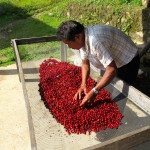
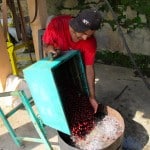











Hi, I am traveling to Mexico with my mother near the end of this month (January 26th) and would love it if you could put me in contact with Gus! This sounds amazing. Thanks!
Hi Ada,
You can contact Gus via Hotel Santa Fe or via the shop when you come to Puerto. They have a roastery and café in Zicatela.
Enjoy!
Hey Alex! Thoroughly enjoyed this piece, and always get so excited when people have the opportunity to experience something like this. Given that, I too would like to pop my coffee farm cherry. However, I would like to spend a bit more time (1-2 weeks perhaps), on the farm. I was wondering if you might be able to point me in the right direction of a person/organization that can help make it happen for me? Thanks for the inspiration!
Hi James really nice to hear from you. We’ll be reaching out to you in private to help you!
Hello, My daughter (15) and I are planning a 3 week trip in April to Veracruz and Oaxaca. I just read your fascinating article. Could you put me in touch with Gus…? I speak Spanish (used to live in Michoacan) and my daughter speaks Swedish : ) Thanks in advance!!!
Hi Syliva.
So nice to hear from you and your interest in getting in touch with Gus. I have to say, I haven’t heard from him in a while myself but I am going to be back in Puerto Escondido in one week and I’ll see if I can track him down as my partner and I are keen to visit him again. Otherwise, reach out to the Hotel Santa Fé in Puerto Escondido and see if they can put you in touch with him!
I like James am interested in spending a little more time on a farm. Working, observing, being useful. Paying. But really keen to soak up the information with a little more time. Would be great to know if you can help me too or point me in the right directions. Thomas UK
[…] References: Alliance for Coffee Excellence: Finca las Nieves Viva Puerto: Finca las Nieves: Reviving Local Coffee Production The Coffee Vine: Popping my Coffee Farm Cherry in Mexico […]